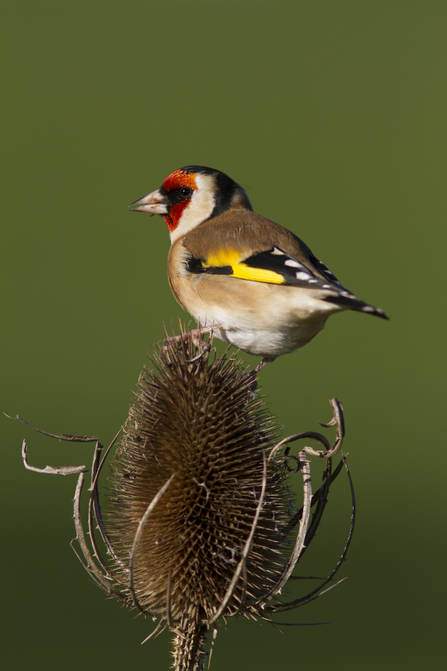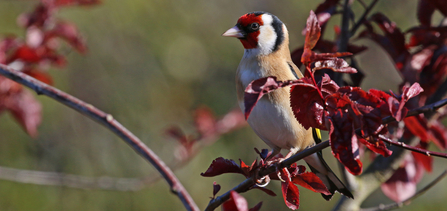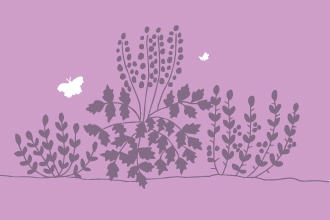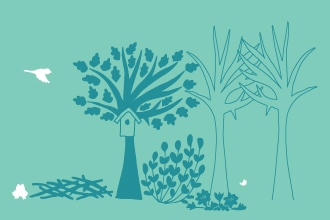I was talking to our chief exec this week and out of the corner of my eye I noticed a movement outside his window. We both took a moment to watch the lonesome goldfinch feasting on the seeds buried within the teasel heads in the garden outside his office. Just for a moment or two, we did that beautiful thing...paused to watch the natural world.
I imagine that this is something we share with you. If not, I recommend it. It doesn't have to be for long but just pausing and taking notice of what's going on - whether a shrew squeaking from the undergrowth, a skylark singing from on high or a bee buzzing away in a flower - helps to ground you and bring you back to the here and now, away from whatever cares and worries you may have. It becomes that bit easier if you're able to take a few steps to help nature where you live or work.
Goldfinches are a great example. With their striking plumage, you'd be forgiven for thinking that they're just here on their hols from places far more exotic than the UK. First recorded in England in the Anglo-Saxon period, numbers more recently (1995-2023) have increased by 152%. According to the British Trust for Ornithology this has been accompanied by an increase in the use of gardens by goldfinches during winter. Whilst many people put out food, even more are planting the right kind of shrubs and leaving the seedheads uncut during winter, providing lovely sculptural features and helping wildlife at the same time.






